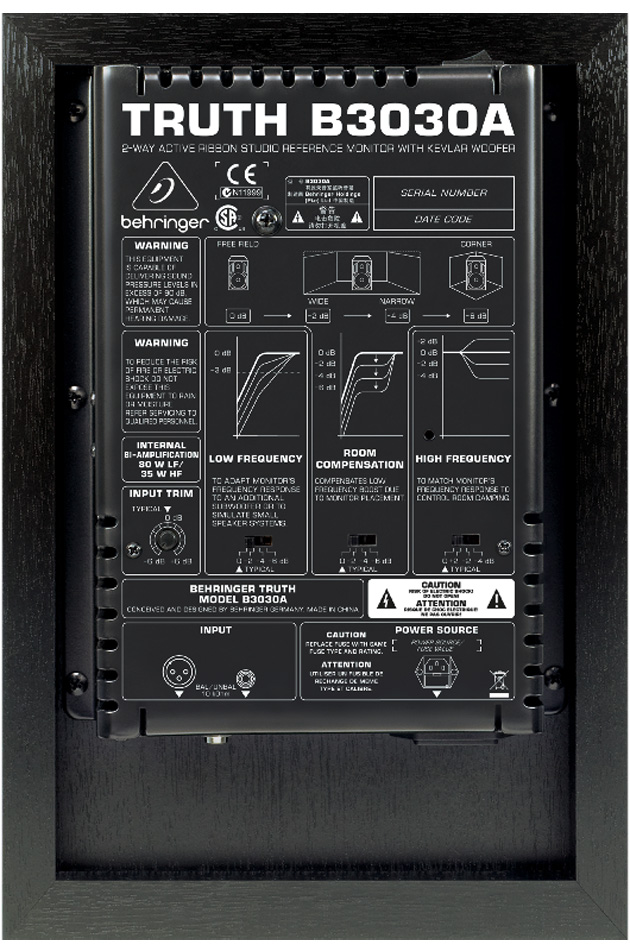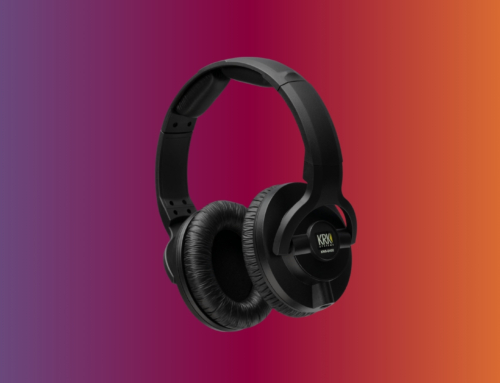 Sound is one of those aspects that is always open to interpretation and always accompanied by multiple opinions. One recording, especially in unfinished form, might sound “great” to some ears and muddy to others. But, before a track hits the radio or iTunes, a general consensus is necessary, and poor-quality monitors are essentially a sonic crapshoot.
Sound is one of those aspects that is always open to interpretation and always accompanied by multiple opinions. One recording, especially in unfinished form, might sound “great” to some ears and muddy to others. But, before a track hits the radio or iTunes, a general consensus is necessary, and poor-quality monitors are essentially a sonic crapshoot.
The Behringer TRUTH B3030A, a two-way active ribbon studio reference monitor with a Kevlar woofer, essentially eliminates this. Behringer aimed to take both reference monitor quality and sound up a notch, and based on a few listens, the brand definitely closes the interpretation gap.
Behringer claims that its previous monitors, while setting the bar for studio quality, weren’t the apex and, instead, the brand looked to reach perfection as close as possible. The physical design, once you hear the sound quality, says it all: rather than settling for industry-accepted components, the TRUTH B3030A incorporates an ultra-high resolution, two-inch velocity ribbon transducer and a Kevlar-coned woofer in a deformation-resistant, die-cast aluminum chassis. Technical definition aside, the new components, based upon a few listens, allow for better accuracy (if you thought it couldn’t be improved, you’re wrong) and better response.
You, as well as I, know that Kevlar is one heavy-duty material – so much so that it’s now commonly used for bulletproof vests. On the other hand, this usage sets the stage for another asset – a lightweight design. This combination – extremely strong yet light enough to replace paper in a monitor – handles energy levels better. The result is bass without distortion and a quicker response. Each subtlety, every scratch and pitch distortion, becomes easily apparent with a listen. In terms of making a recording, this leads to far improved accuracy.
Ribbon tweeters compound to this. Behringer claims this new feature passes previous levels, as the result of two-way dispersion: horizontal and extremely-fine vertical dispersion. Like the Kevlar, the ribbon tweeters also react quicker and reproduce frequencies outside of the standard range.
 But what good is a monitor if it can only be used in certain, extremely specific conditions? The additional – and perhaps just as significant, if not greater – asset is the TRUTH B3030A’s ability to adapt to practically any acoustic. Place it in even the most “dead” space – one in which the sounds of organic instruments are absorbed by carpeting – and the recording’s sound is still top-notch. Switches allow the monitor to adjust to both acoustics and space characteristics, such as less-ideal placement against a wall or in a corner. This essentially means that you can record just about anywhere and still have accurate, high-quality sounds produced.
But what good is a monitor if it can only be used in certain, extremely specific conditions? The additional – and perhaps just as significant, if not greater – asset is the TRUTH B3030A’s ability to adapt to practically any acoustic. Place it in even the most “dead” space – one in which the sounds of organic instruments are absorbed by carpeting – and the recording’s sound is still top-notch. Switches allow the monitor to adjust to both acoustics and space characteristics, such as less-ideal placement against a wall or in a corner. This essentially means that you can record just about anywhere and still have accurate, high-quality sounds produced.
The other issue with many monitors is a small quality range, tied in with monitor fatigue in the upper frequency. TRUTH B3030A eliminates both issues. Based upon use, the device provides a far greater range of quality and dispersion, from low- to high-end frequencies. The result is all-around clarity and accuracy.
There are certain pieces of gear that are good and others that are revolutionary. Considering the quality of Behringer’s previous models and the improvements, both technical and sound-wise, the TRUTH B3030A is likely to fall within the latter category at some point.




